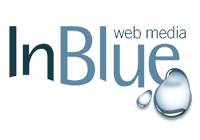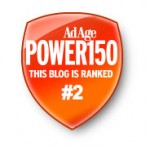1. Flash
It’s hard for me to be unbiased when it comes to Flash web designs. One could argue that using Flash sparingly can enhance a website’s design, but I argue that the same functionality can be achieved with HTML, CSS and a little Javascript (why you shouldn’t use flash to build your website is an entirely other topic). My beef with Flash is that the point of your website is not to be “flashy.” Elaborate button hover effects and animations are great for video games, not for content-based websites. Instead of thinking “How can I impress people with my website design?” ask yourself how you can empower people with your website.
2. Music and/or video on page load

Any Way You Want It – except for automatically playing music!
The ability to embed audio and video on a website is one of the greatest advantages of a website over traditional marketing collateral. I wholeheartedly encourage you to produce multi-media content and make it available on your site. Just please don’t have it play as soon as I visit the web page. Give users the choice to watch or listen to your content. Your website visitors may be at work, in a library or somewhere else where loud audio will result in navigating away from your website as quickly as possible!
3. Badges
Just as with anything, badges that show off your affiliations to social networking sites, industry organisations and other websites are good in moderation. Website badges tend to be difficult to style and rarely jive with your site’s design. Also, a lot of widgets tend to use flash (see #1).
4. Clutter
Figuring out the goal(s) of your website isn’t as easy as it sounds, especially if you have many products, services or events that you are trying to promote. When figuring out how to get the word out about a new initiative, a common mistake is to “put it on the homepage”. Your homepage should be a well thought-out piece of your communications and internet marketing strategy – not a bulletin board. It seems as if Google announces a new product every week, but their homepage is relentlessly focused on their goal – helping you search the web.

If your company does have a lot of products, services and events that need to be communicated, make sure your website’s design is built with this in mind.
5. Advertising

Unless your business’ only revenue stream is advertising, you should never put a banner ad or Google AdWords on your site. The purpose of your website and its content is to create business for you, not other companies! Ad networks like Google AdWords will often put competitors’ ads next to your content. Sure, you could make an extra few bucks a month putting ads on your site, but my guess is that one extra customer / client a year will bring your more revenue than your advertising endeavours will. Putting ads next to your content decreases its perceived value. You owe your content (and your business) more than that.
6. Low or high contrast
Have you ever been to a website that has white text on a black background? It may look nice from a design perspective, but boy does it hurt my eyes.

I stare, like many other people nowadays, at the computer screen for hours a day. Don’t make reading your content more difficult than it has to be. Do your readers a favour and make the text on your site easily readable. Your best bet is to stick with black (or grey) on a white background. Here are some other good suggestions of what text colour & background combinations work and don’t work.
7. Complex navigation
One of the cardinal sins of web design is to change the navigation from one page to another. The object of your site should be to enable visitors to find what they are looking for as quickly and easily as possible. Changing the main navigation from page to page will frustrate visitors and cause them to leave. Trying to cram all of the pages on your site into the navigation will have the same effect. Beyond a consistent main navigation menu, you can assist visitors using breadcrumbs and paging.
8. Splash page
Don’t confuse a splash page with a landing page. Splash pages were (and unfortunately still are) used to advertise what the site they are visiting is about. Marketers employ splash pages because they don’t trust the layout of their homepage to communicate effectively. Smashing Magazine has a great run down of why we don’t need splash pages. Landing pages, on the other hand, are used as part of a campaign to convert web visitors into leads or customers. Effective landing pages strip out all other information that distracts visitors from completing a desired action.
9. Non-relevant content

Everybody likes silly cat photos, but what does it have to do with your business? Just because you have content doesn’t mean you should put it on your site. In fact, non-relevant content can hurt your site. Visitors who find your site will see this other “off-topic” content and be confused what your business’ focus is. There is nothing wrong with adding anecdotes and a personal touch to your content, but make sure you stay on topic.
10. Pop-up windows
The pop-up window in the original “pain the butt” of websites. There is nothing more distracting or infuriating than a pop-up window, especially if it is an advertisement. Pop-up windows not only distract visitors from your website’s content, but also create a spammy, low-value vibe on your website. If you want to duplicate a pop-up effect, there are modern methods available, but again, they should be used in moderation. Are there any other website distractions that get under your skin (or maybe just annoy you)? Please share them in the comments!






